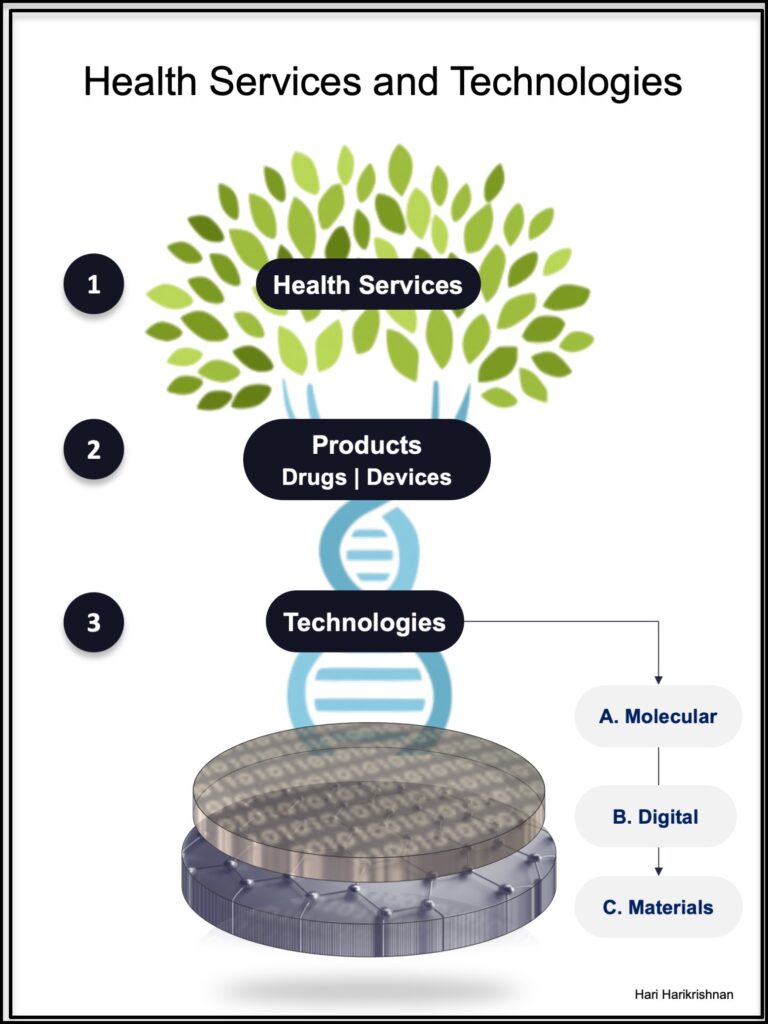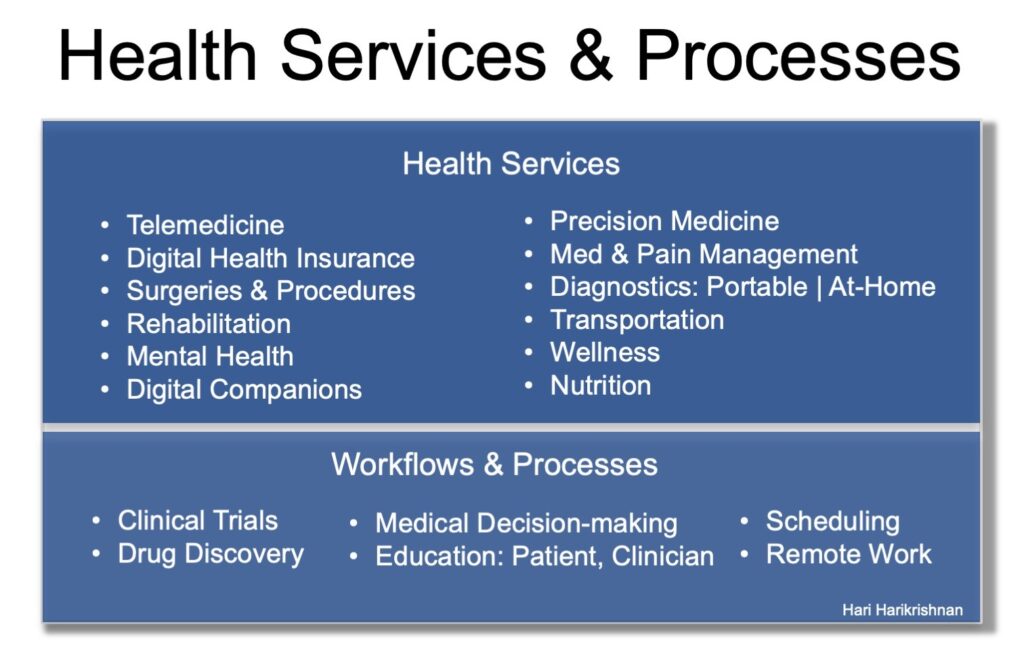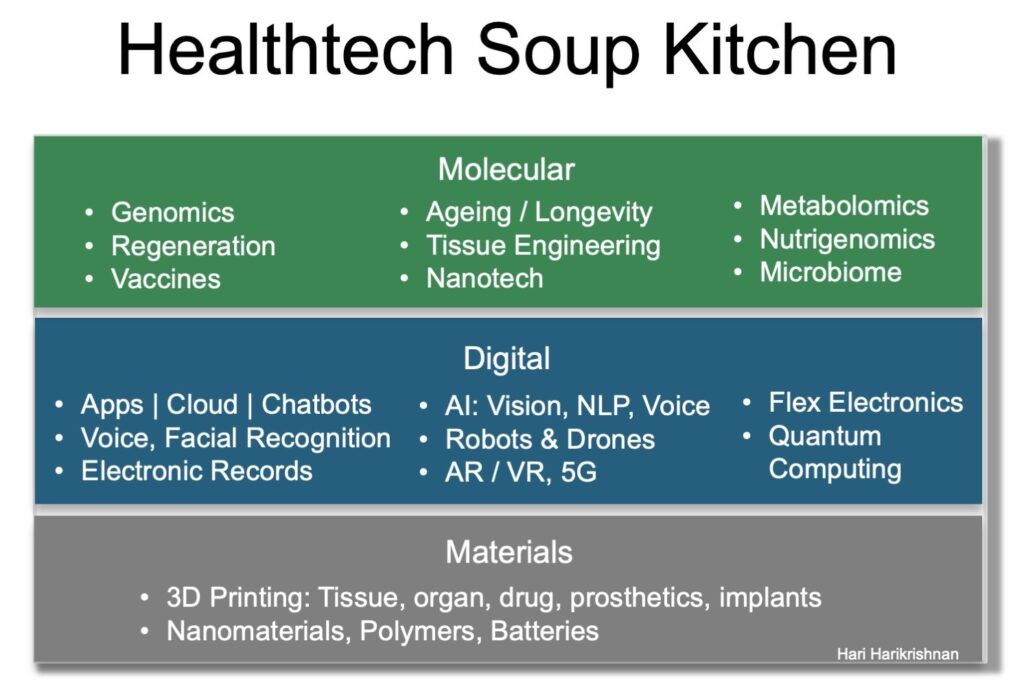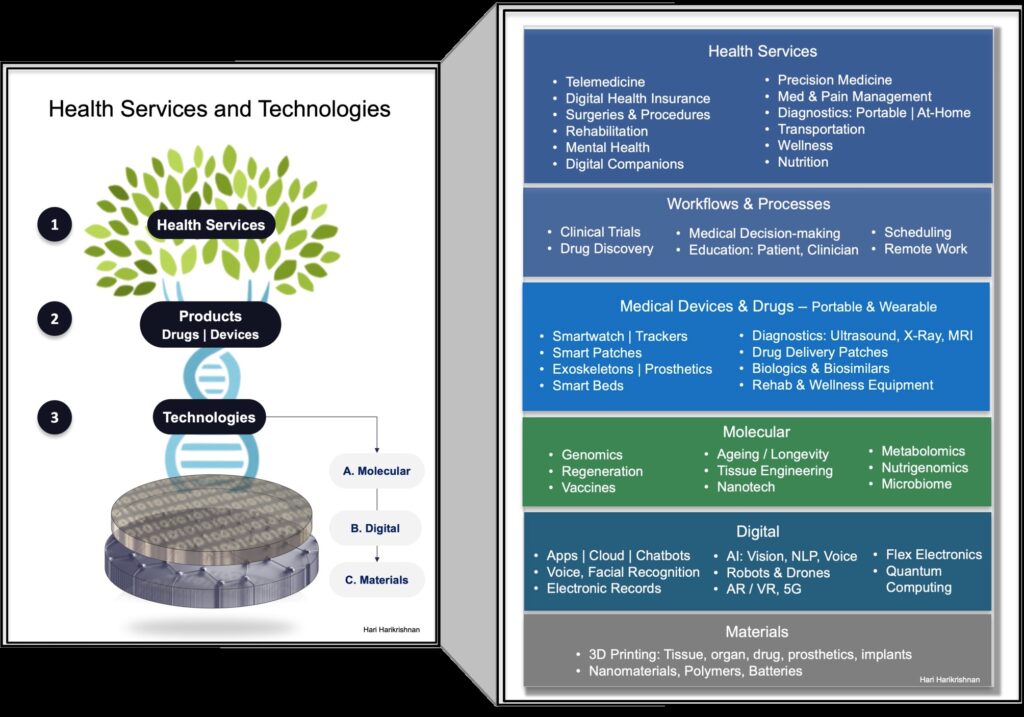The Really Simple Guide to Navigating Health Care Technology Innovations
By Hari Harikrishnan, Chief Innovation & Product Officer, The Cerebrus Group
We hear about technology-enabled healthcare innovations constantly. Peloton’s camera for better strength training using vision AI; Microsoft’s acquisition of Nuance for conversational AI; Google using AI for drug-discovery; Amazon Care for employee health benefits; The list goes on.
When innovation meets healthcare, arguably the most complex industry, some think of the status quo and regulations stifling innovation. We hear about the industry adopting certain technological innovations, such as digital technologies, slowly compared to others. At least until a pandemic arrives, perhaps?
How do we connect the dots across all these innovations?
This is a straightforward guide to making navigating technologies in healthcare easier so that the next time you hear about an innovation, you will know where to place it in the landscape of technology innovations in healthcare.
Read on to see the infographic that puts multidimensional technological innovations in perspective.
A Top-Down View

We know innovation comes in many shapes and forms. To understand technological innovations in health care, we must look at the innovations from the vantage point of healthcare services we receive as consumers or patients.
We can categorize the innovations into three broad areas:
1. Health Services: Primary care to specialty care, hospital care, diagnostics, and health insurance fall into this category
2. Products – Medical Devices and Drugs: Complex implants, surgical devices, wearables, vaccines, and even the common tongue-depressor that the clinician uses to examine us fall into this category of products.
3. Technologies: They fall into three categories – A) molecular technologies (chemical or biological), B) digital technologies (information & communication technologies), and C) materials (chemicals, plastics, metals, etc.)
Even simple health care services require the use of devices or drugs powered by these technologies. Think of the technologies inside the products used for routine medical care – blood pressure monitors, thermometers, x-ray machines, and medications.
We will use this hierarchy of services, products, and technologies to put in context the slew of technologies we will look at next.
1. Technology-enabled Services
Let us look at the type of innovations in each category of services, products, and technologies.
New and Existing Services Improved
How we think of innovations as fast or slow is relative to each of our baseline assumptions. Regardless, rest assured that the march of innovation is relentless.

Some highlights from the services innovation include:
- Telemedicine: Covid unleashed a level of creativity and innovation in delivering care remotely, enabled by digital technologies
- Digital insurance: We are still in the early stages of ways to provide health insurance services using our individual data
- Surgery: Robot-assisted surgeries that augment clinicians are becoming more widespread.
- Rehabilitation: Services using apps abound. Exoskeletons and prosthetics driven by robotic technologies or new materials are proliferating.
Workflows and Processes
Service innovations require process changes and underlying workflows. These processes and workflows undergo dramatic change anytime a new medical device, drug, or technology is introduced.
Examples include:
- Clinical trials are made more accessible by mobile technologies to recruit participants and keep them engaged
- Drug discovery enabled by artificial intelligence (AI).
- Patient and clinician education using mobile, videos, augmented/virtual reality (AR/VR)
2. Products: Medical Devices and Drugs
Medical devices and drugs comprise about 15% of US healthcare spending. Within these two markets, innovation continues, enabled by digital, molecular, and materials technologies.

A classic blood pressure monitor becomes smart and connected, enabling a telehealth service. Wearable medical devices blur the lines between classic medical devices and consumer electronics. Diagnostic devices such as ultrasound machines become smaller and portable, making their use at points-of-care more prevalent.
COVID accelerated the journey from research to trials to productizing new therapies on the drug front. mRNA vaccines being the prime example. The trend of acceleration of development is slated to continue, taking advantage of the change in global collaboration, regulatory environment, and process digitization.
3. Technologies
Depending on our industry perspectives, we may think of medical technologies as falling into “medical” vs. “computational”. Here, I have classified the technologies into three categories – molecular, digital, and material technologies.
This article aims not to describe each technology exhaustively but to provide a sampling of what is brewing in each category.
There are exciting innovations in each category. Molecular technologies boast mRNA and genomics, while digital holds promise with robotics and AI. Materials maybe the unsung heroes in this group.

Select examples include:
- Titanium or platinum in implants
- Nano-scale materials in batteries, sensors, or molecular technologies
- Polymers that makeup contact lenses
- Plastics in catheters used in minimally invasive surgeries
- Carbon in replacement heart valves
Just as drug discovery is being accelerated by AI, material discovery and testing are being boosted by AI. 3D printing offers exciting possibilities to create biomaterials for exoskeletons.
The convergence of these three technology realms – molecular, digital, and materials – with each reinforcing the other will be a tremendous boost for new health services and therapies in the next decade.
Applying the Guide
This infographic puts together into one view the health care services, the products (drugs and devices), and the technologies.

Here is how to use this guide to make sense of the innovations we discussed earlier –Peloton, Google, Amazon, or many others that will surely make headlines:
- Peloton is integrating digital technologies (vision AI) with their smart exercise equipment to offer wellness services
- Google uses digital technologies (AI and Cloud) to discover new drugs or enable others to discover drugs faster. Pharmaceutical companies are using digital and molecular technologies to find new therapies.
- Amazon is starting to offer services (employee benefits/insurance, pharmacy) using digital technologies, including Amazon Web Services.
This graphic also lets us see the alternative ways a medical problem can be potentially solved in the future using one or more of these technologies.
For example, will we solve an orthopedic issue with our knee using a 3D-printed metallic knee implant, an exoskeleton, or regenerative therapy? The actual intervention would depend on our specific condition and the availability of the technology, of course.
In short, we are integrating technologies from molecular, digital, and materials categories to build new drugs and devices to deliver new health care services.
Summary
It may seem challenging to keep up with the pace of technological innovation unleashed in healthcare by combining technologies from molecular to digital to materials. Mapping these technologies to the wide portfolio of health services – insurance, primary care, surgery, etc. and their underlying workflows – clinical decision making, scheduling, drug discovery, etc. – will make it easy to apply innovations to improve our health care system and health outcomes.
Hari Harikrishnan is Chief Product and Innovation Officer at The Cerebrus Group, a digital product strategy advisory group.

